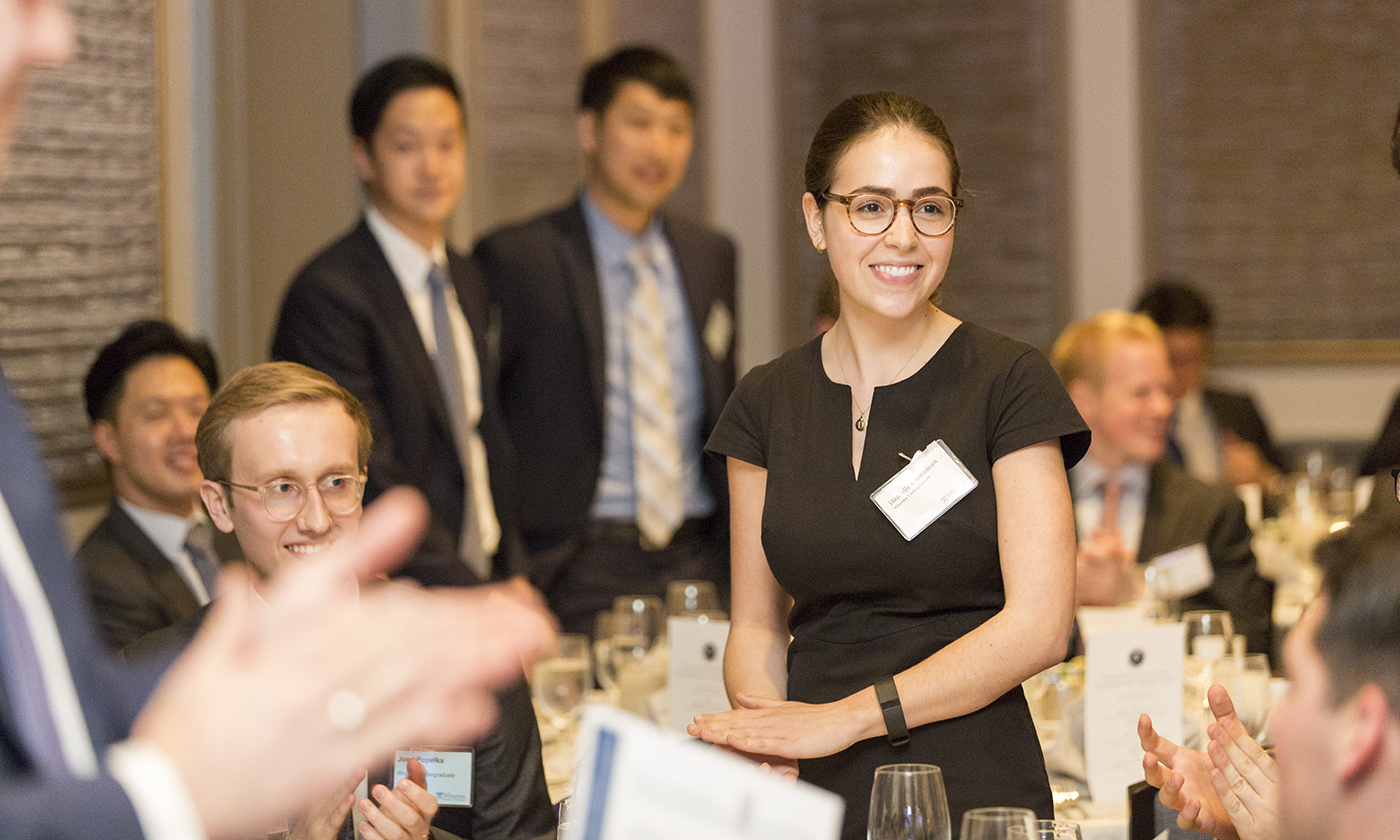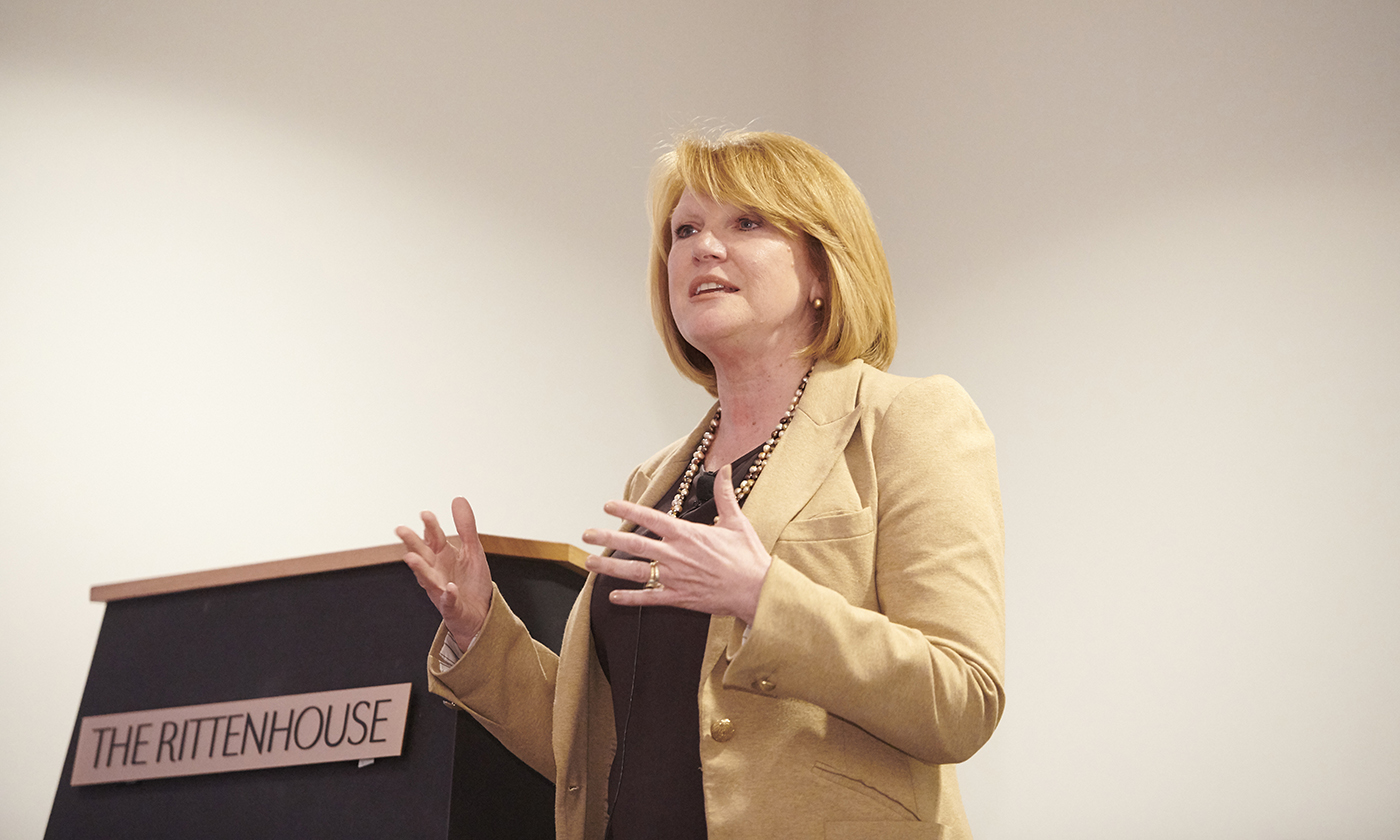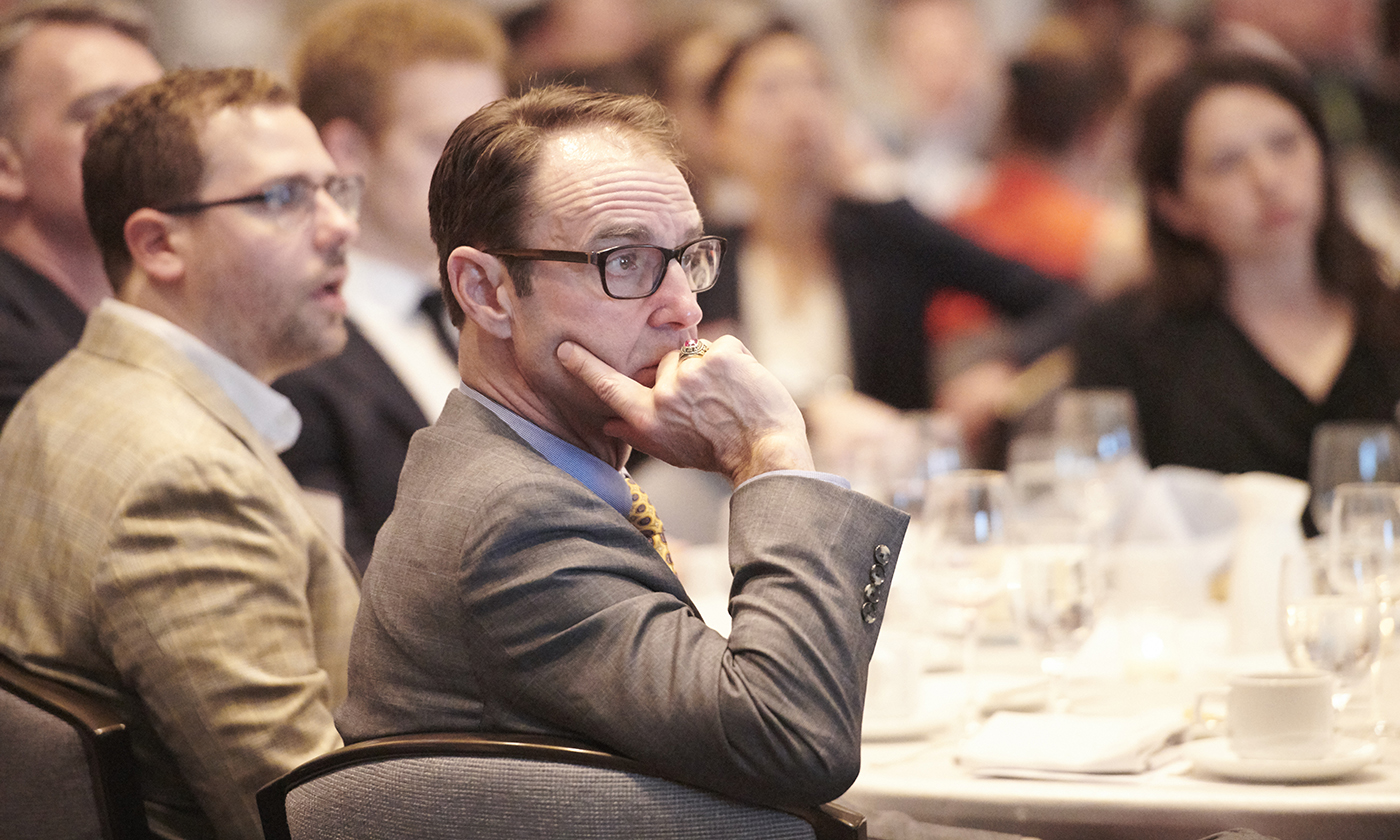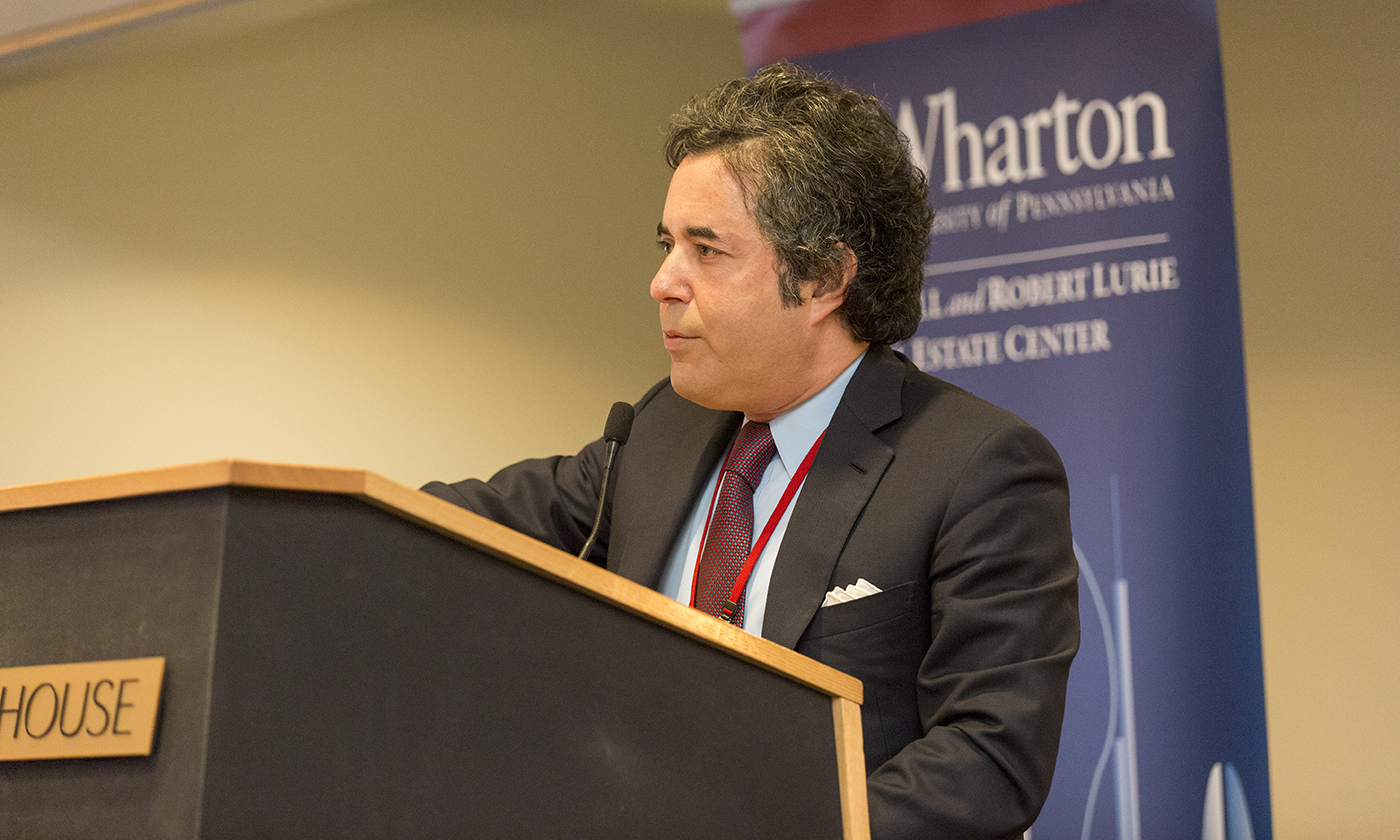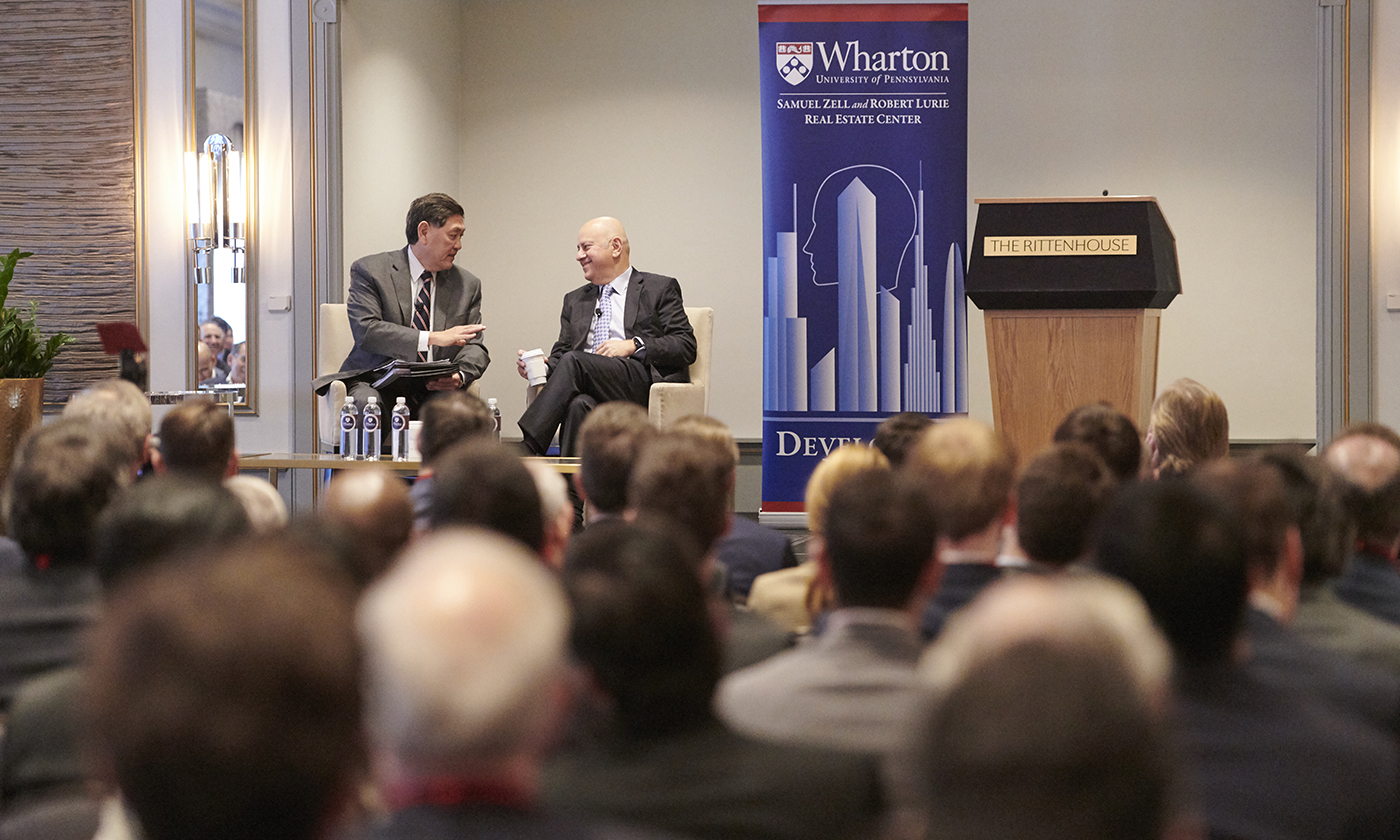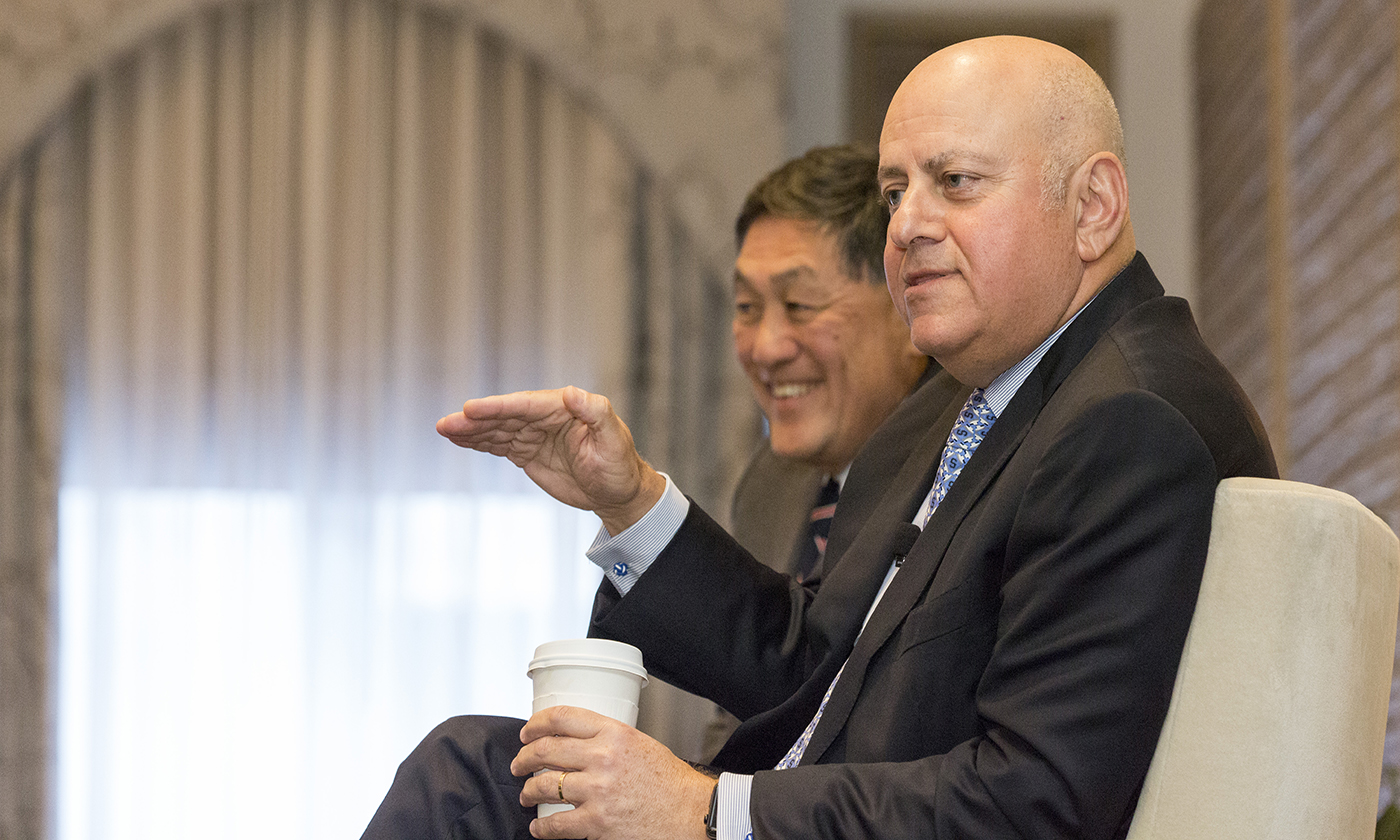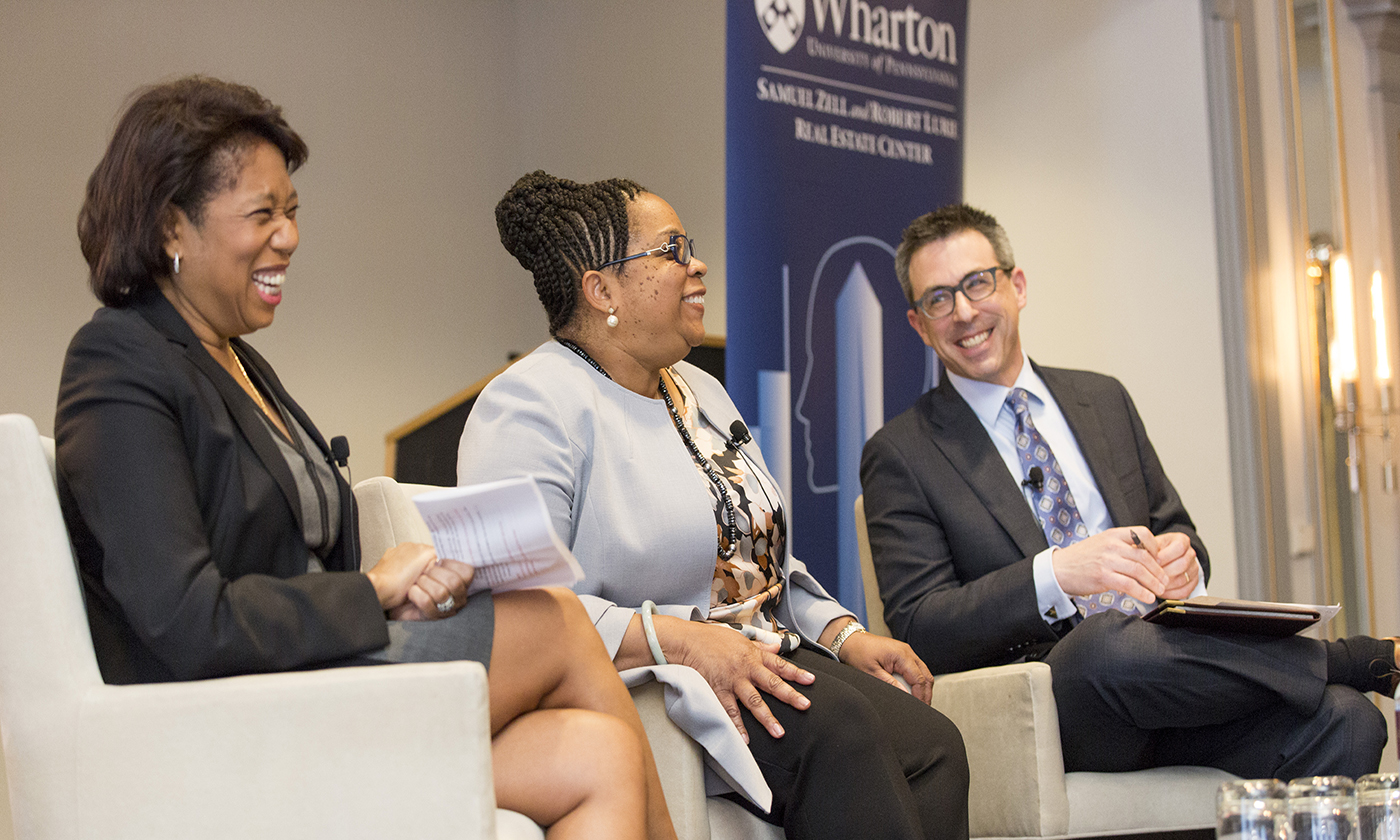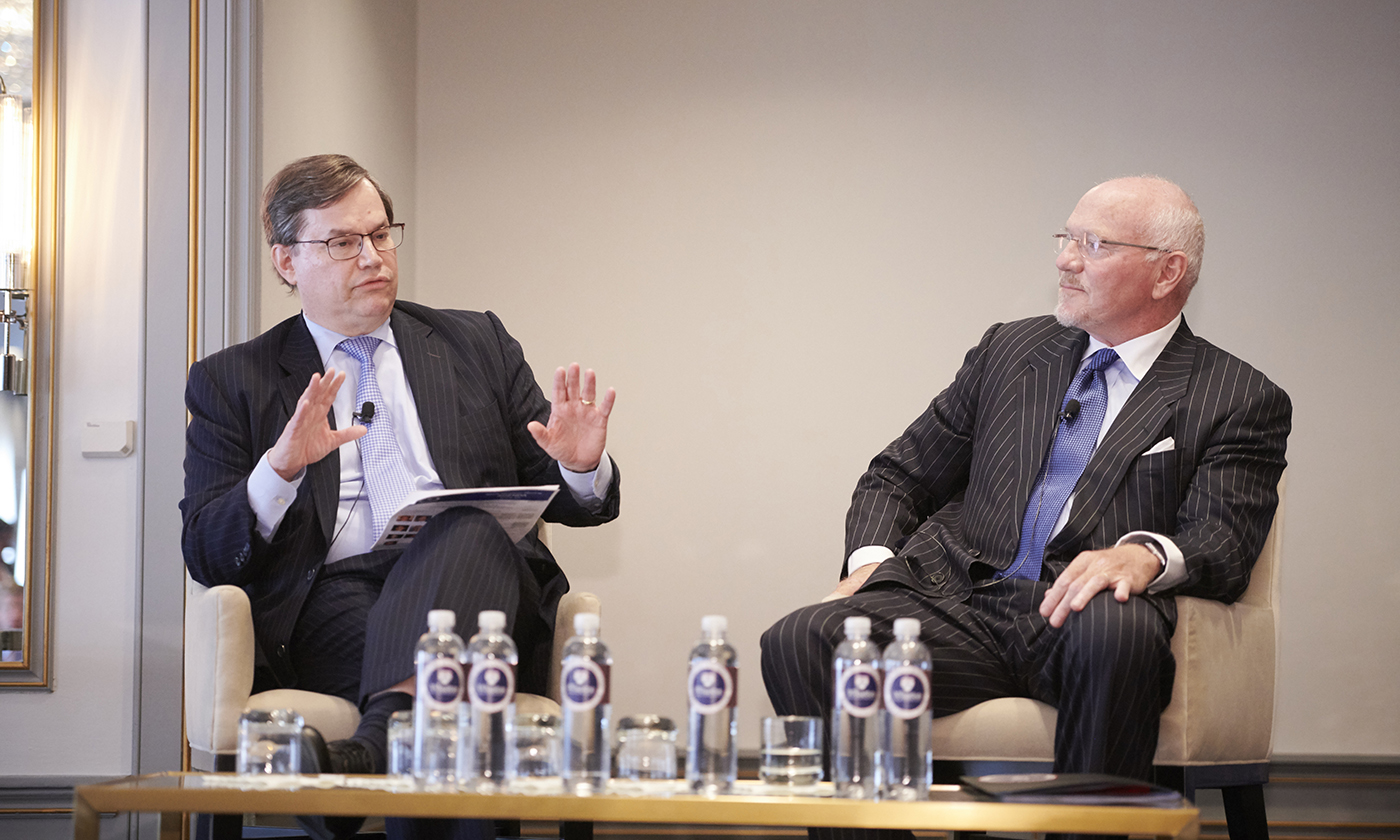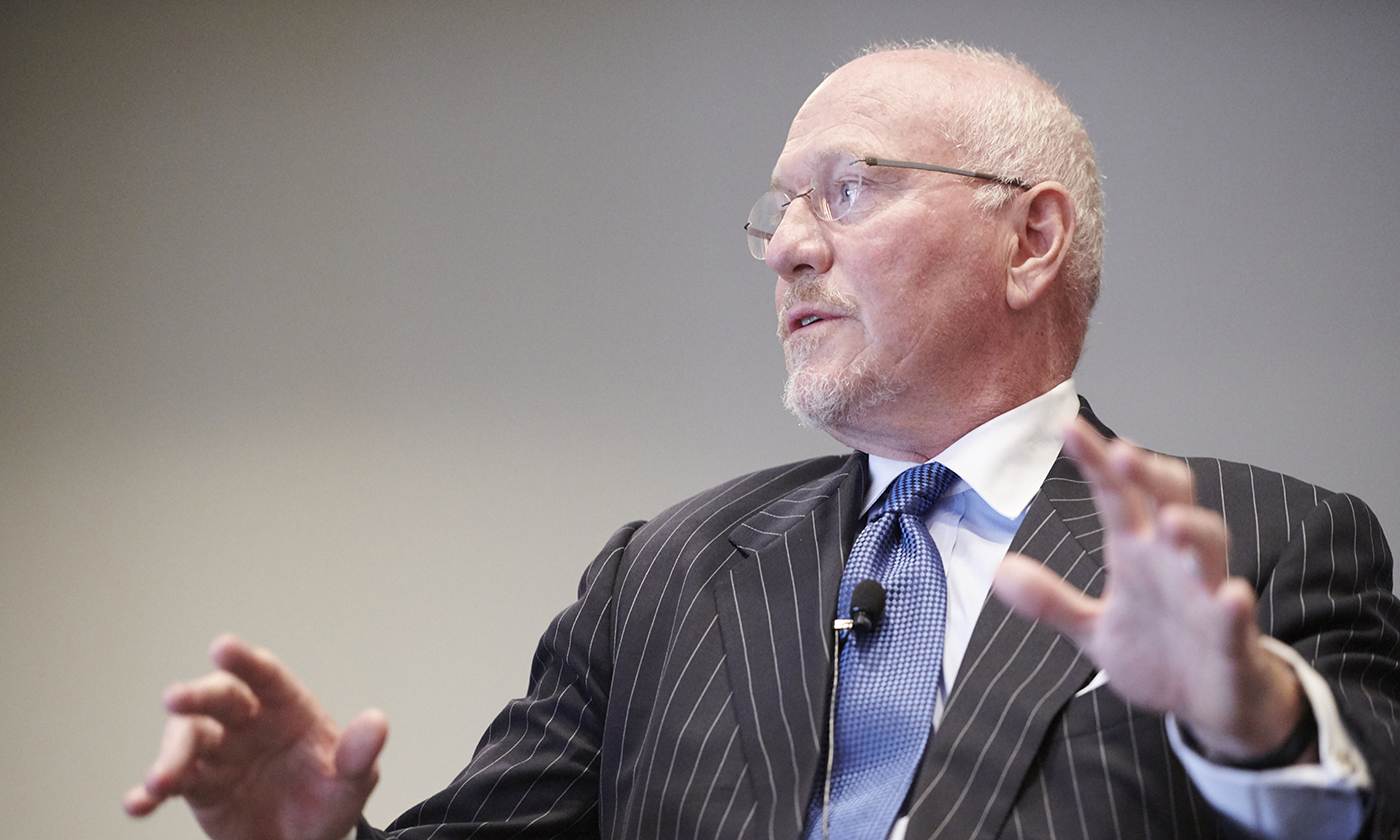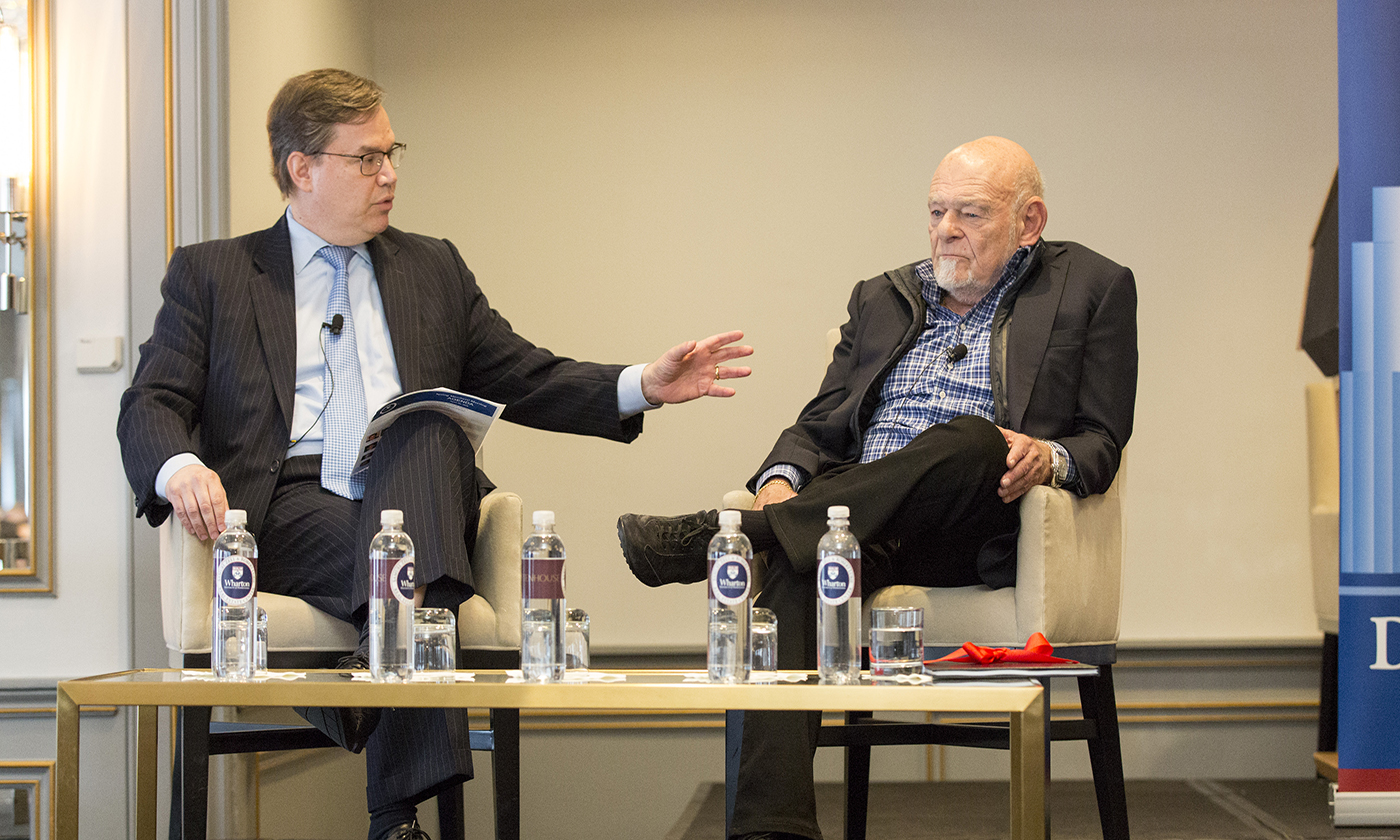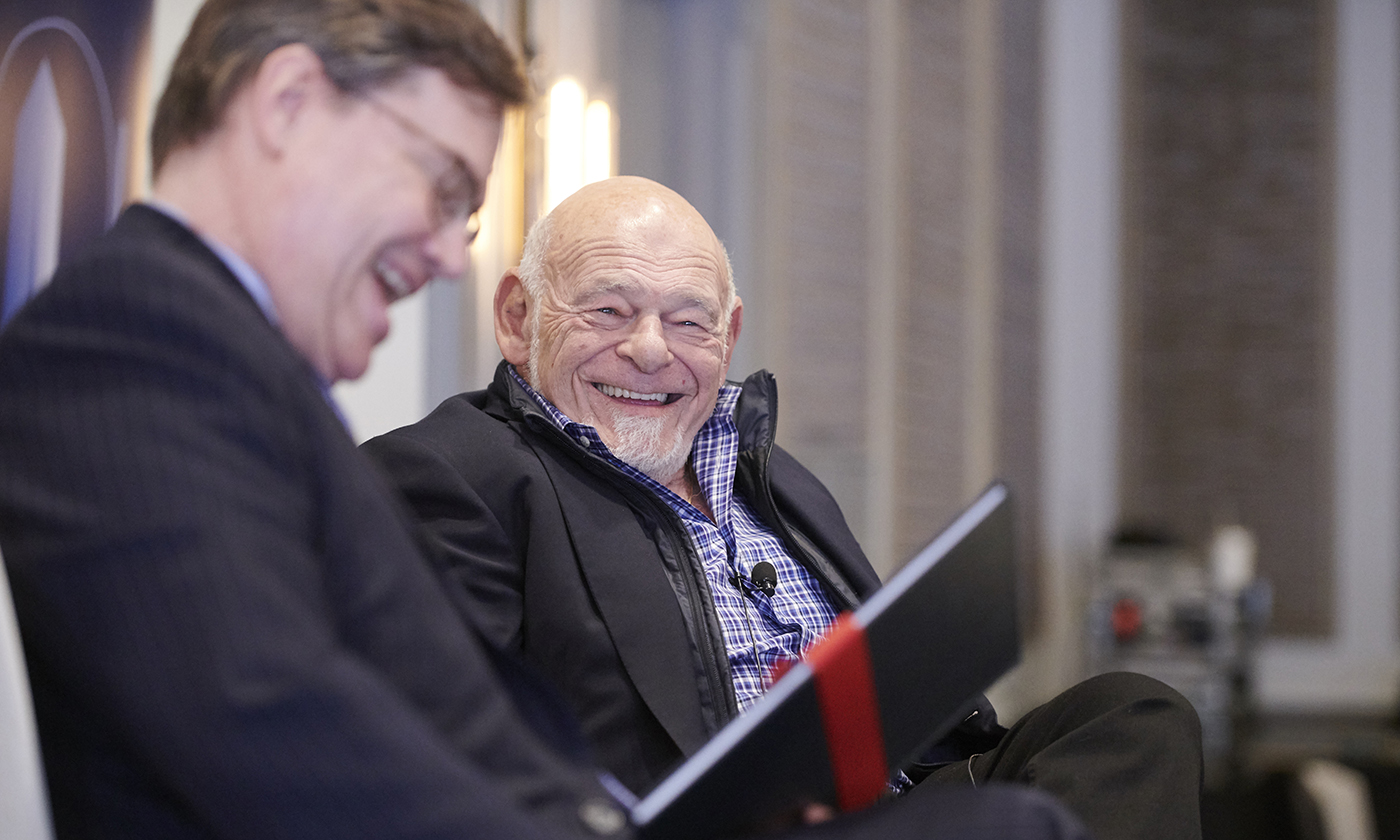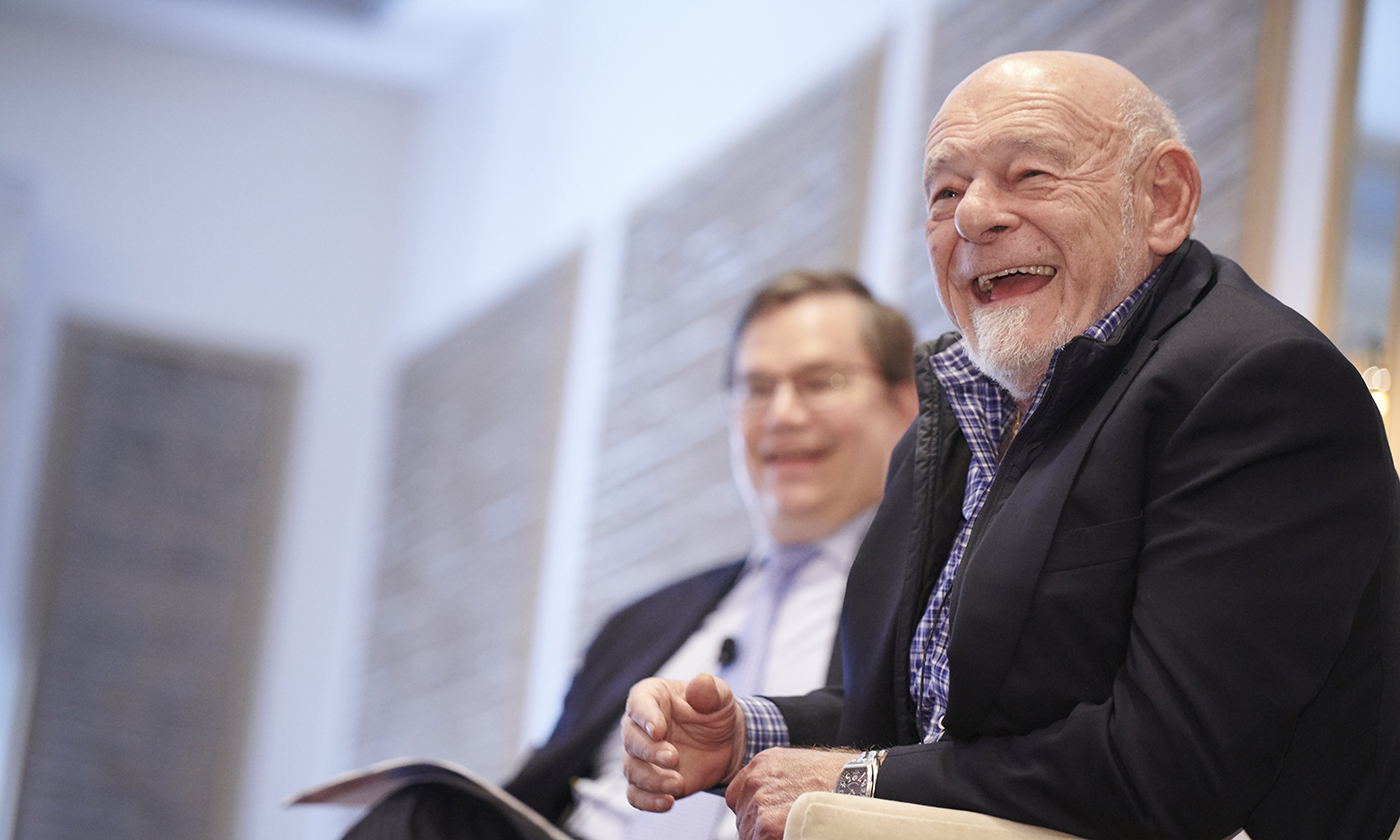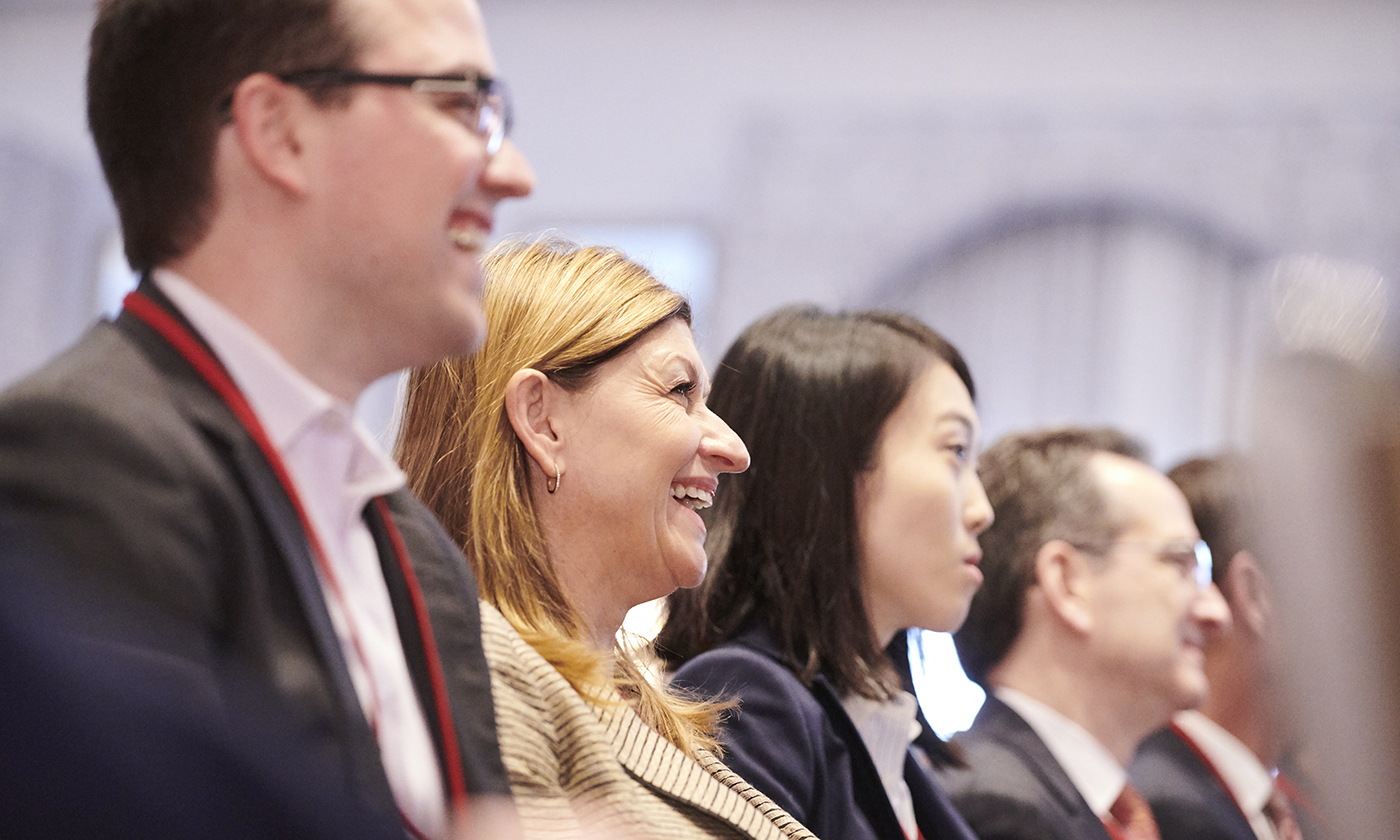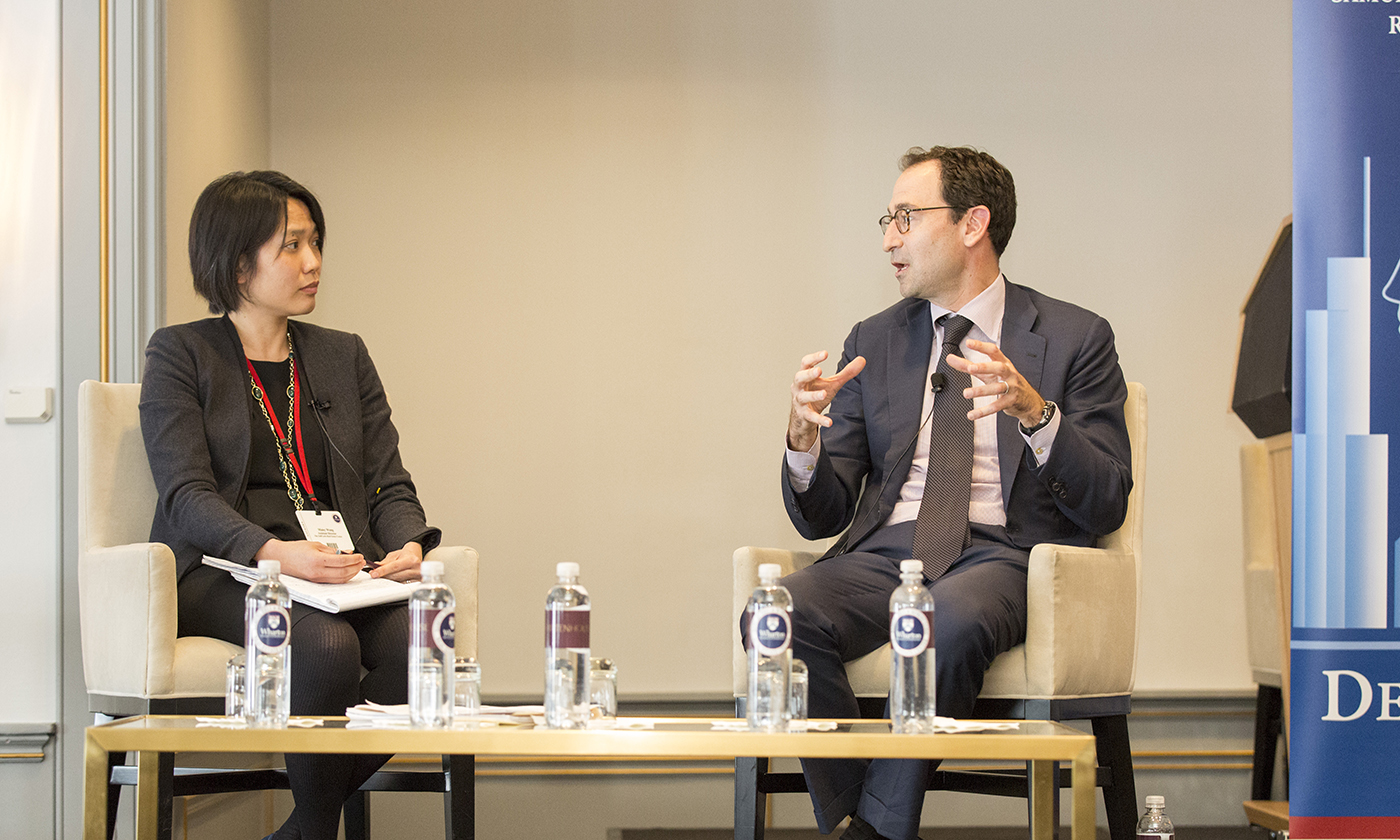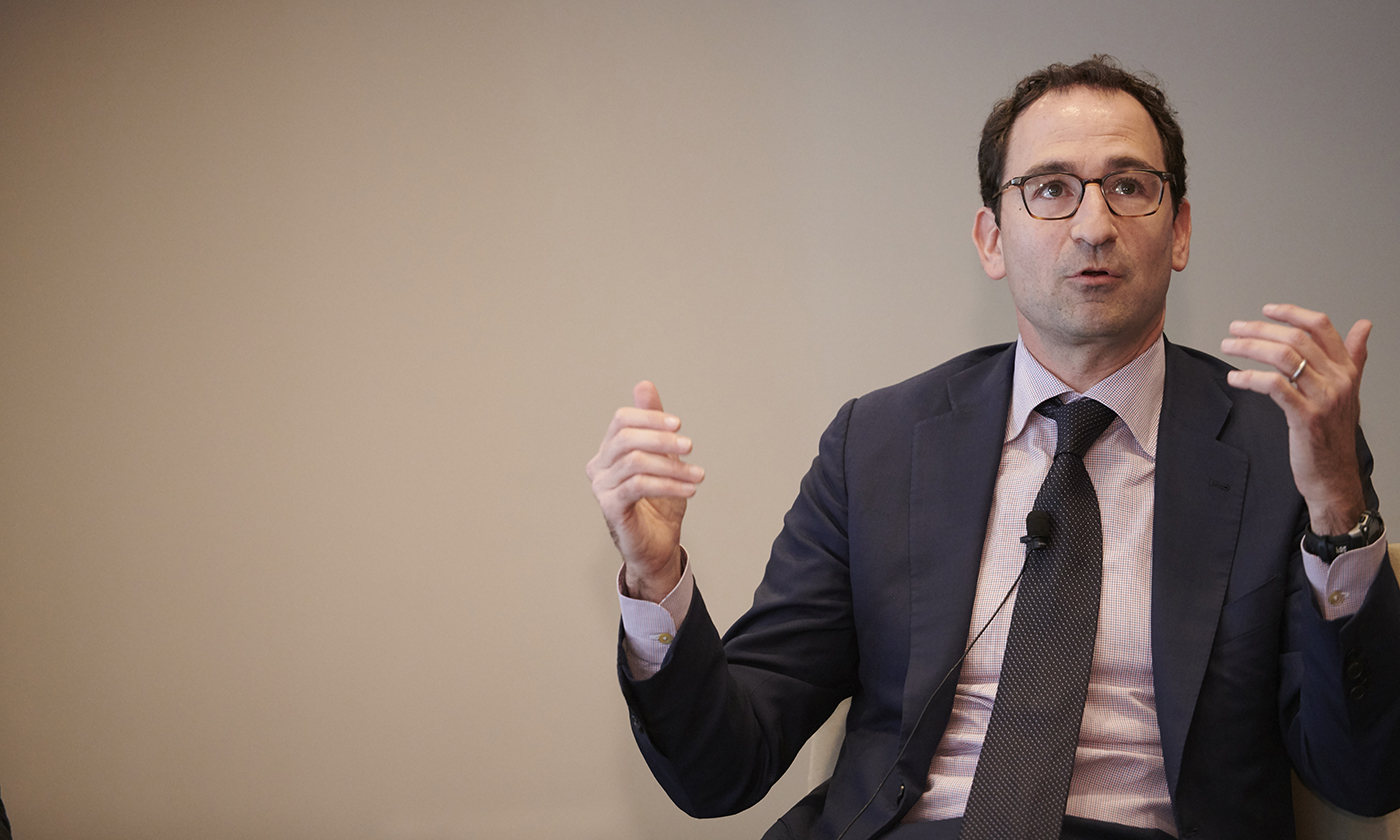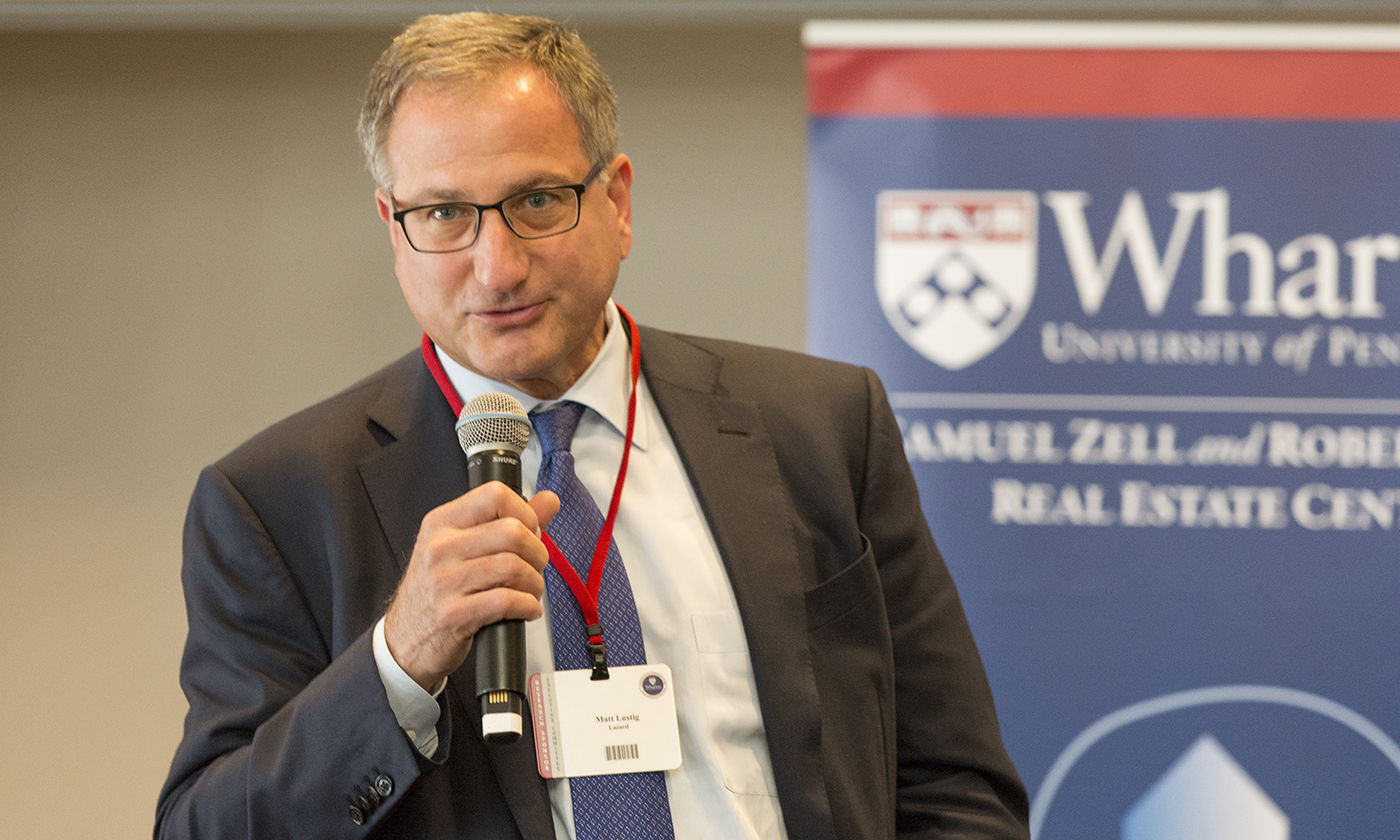2018 Spring Members’ Meeting Summary
Zell/Lurie Real Estate Center 2018 Spring Members’ Meeting
Wednesday, April 25, 2018 – Thursday, April 26, 2018
The Zell/Lurie 2018 Spring Members’ Meeting began with a dinner and talk for all guests at the Rittenhouse Hotel. Student and faculty awards were presented during the dinner. Afterwards Joe Gyourko, Nancy A. Nasher and David J. Haemisegger Director of the Zell/Lurie Real Estate Center, thanked Spencer B. Haber, Chief Executive Officer, H/2 Capital Partners LLC, for his service as Chair of the Advisory Board. Haber is stepping down after three successful years as Chair. Matthew Lustig, Head of Investment Banking, North America; Head of Real Estate & Lodging, Lazard, will take over as Chair from his position as Vice-Chair. Ron Kravit, Senior Managing Director, Cerberus Capital Management, has accepted the position of Vice-Chair.
Madeline Bell, President and CEO of Children’s Hospital of Philadelphia, was the Keynote Speaker for the evening and delivered a fascinating talk on the business of running the world-renowned hospital and some of the innovative work done there. The engaged audience asked many questions. Cohort groups then gathered at the Rittenhouse and outside locations for independently organized networking events.
Spencer B. Haber and Joe Gyourko opened the following day with welcoming remarks. Haber thanked Sam Zell, Chairman, Equity Group Investments, for his founding gift that endowed the Center twenty years ago and acknowledged the gift made by John Grayken, Chairman, Lone Star Funds, in 2016, which has endowed the Center’s international program. This year will be the 5th anniversary of the London program and the inaugural Asian program will take place on October 23, 2018.
“Things are growing and expanding, thanks to people like Sam and John,” said Haber. “Thank you!”
He also thanked Gyourko, who has been the Center Director for 19 years.
The day’s first presentation was A Conversation with Hamid R. Moghadam, Chairman and CEO, Prologis, moderated by Asuka Nakahara, Associate Director, Zell/Lurie Real Estate Center.
The men opened the session by discussing Moghadam’s history. Nakahara wondered how, with an MBA from Stanford and a master’s degree in engineering from MIT, Moghadam ended up as a “warehouse guy.” Moghadam explained that through various strategies, sales and mergers, he and his partners eventually realized that the action is on the larger markets, mostly on the coasts, but also in Atlanta and Chicago, for example. Prologis is now the number one company in the warehouse space.
“What makes you unique?” asked Nakahara.
“We realize that the real estate business is cyclical and it’s important to have a hybrid model,” Moghadam said. “We operate in various currencies and invest in the consumption side of the business. We’re global, in 19 countries; we’re customer focused, following them around and investing in places you may not want capital invested over time; we have a big development business—about 100 projects at any given time; and we have a capital business with big investors.”
He added that his strategy is to develop a deep market share in markets that “really matter.”
Nakahara asked about the biggest changes Moghadam has seen in the last five to ten years. He replied that e-commerce is the biggest development and they discussed how urbanization is playing into that development. As the population in urban areas and clusters grows, it is easier for e-tailers to deliver goods more quickly from centralized distribution centers. However, with the anticipated rise in e-commerce (he predicts up to possibly forty percent from the current ten percent of all retail sales), e-tailers such as Amazon will continue to need and occupy more space.
“Shipping items is a space-intensive activity,” he says. “Even a small coffee cup (he held up his cup) takes up space because of the packaging materials necessary.”
The two discussed the possibilities and merits of retailing going “omni channel,” with Moghadman noting that few will be able to do it due to the drastic differences in the supply chains.
Nakahara concluded by asking Moghadam to comment on what technologies he believes will most impact the future of real estate. Moghadam predicted that flexible, on-demand warehouses will provide logistics and handling, in addition to space. Autonomous trucks and EV trucks with batteries, powered by renewable energy will bring transportation costs to zero. He said that 3-D printing is important for prototyping and emergency parts, but cannot compete with automated mass production.
“What about drones?” asked Nakahara. “They do matter,” Moghadam said. “Maybe they could do the last 50 yards and leave the packages in the back yard and avoid trucks double parking.”
He agreed that virtual reality and augmented reality will be big factors in apparel sales, suggesting that people will be able to scan their bodies and get customized clothing shipped to the door. He predicted that in five years omni channel will have happened and that individualized shipping will have been developed as well.
The day’s panel discussion, Real Estate Investing and Risk: The View from Institutional Capital, was moderated by Todd Sinai, Professor of Real Estate and Business Economics and Public Policy at the Wharton School.
His guests were Kim Y. Lew; Vice President and Chief Investment Officer, the Carnegie Corporation of New York, a private, grant-making foundation with $3.5 billion assets under management; and Yvonne D. Nelson, Head of Real Estate, Bureau of Asset Management, Office of the New York City Comptroller, who has overseen the real estate portion of the city’s pension fund since 2005.
Sinai began the conversation by asking the women to explain their allocations of investment in real estate.
Nelson explained that for the city, the role of real estate has changed since she began. “It was predictable, reliable, and provided cash returns,” she said. “Slowly, we realized that real estate has an appreciation component and we began to invest more on the non-core side of the business, and now have an $8 billion portfolio that is diversified by property type and geography. The goal is to go up about $6 billion more within three years, but only with the best investments we can find.”
As for Lew, she began investing in real estate in the late 1990s as a way to add diversification and hedge inflation. “Since we’re owners, not lenders, we can withstand volatility,” she said. “We don’t have to pay a fixed amount like Yvonne. We pay out 5 percent of whatever value the institution has at the time.”
She added that her organization discovered real estate provided less of an inflation hedge than anticipated, but the organization invests for the long-term, and believes that real estate has provided diversification in ways equity cannot.
The three discussed what makes a high-quality manager and agreed that all things being equal, managers must perform as partners who are knowledgeable and respectful of the relationship, and then they evaluate past performance. “We look at team and structure,” said Lew. “It’s about strategy, team, alignment and partnership.”
“How do you evaluate and measure performance?” asked Sinai. “Would you be okay if part of that performance was . . . we just don’t think we should put the money out right now?”
“It’s important to give credit for discipline. Look at their records and give them credit,” said Nelson. “You can discern if they were astute enough to start investing in early recovery, to realize they were maximizing. It becomes as clear as day.”
Lew added that she chooses managers who can operate in different cycles. Through their 13 managers, they hold $300 million in real estate assets. “We look at logistics, at retail, talk with experts about new ideas and how they might change the marketplace and we build relationships with those who are thinking about long-term trends,” she said. “We don’t rush in and we’re long-term.” She added that she has no need for a fixed allocation and if real estate is not a good opportunity at the time, she will deploy capital elsewhere. Currently they are at about eight to ten percent allocated in real estate.
The panelists discussed ways they manage to hit their target returns and control risk, with Lew carefully finding managers who will produce the return they need, and Nelson sticking with office and retail and working with an internal investment committee.
Next on the agenda was A Conversation with John Grayken: Lessons Learned from Value Investing Around the Globe. Grayken is the Chairman of Lone Star Funds and the benefactor of Zell/Lurie’s international program. The session was moderated by Joe Gyourko.
“We are a global business school,” Gyourko began. “I’ve been here 35 years and the globalization of faculty and student body is what has changed. Your gift, John, allows us to do everything we do here, in Europe and Asia—help students get jobs, run programs like this and be the thought leader in our industry. Thank you for your generosity.”
Grayken talked about his background, explaining he came to Penn in 1974 to play ice hockey and study economics. He then described Lone Star: started in 1997 with 15 or 16 funds now and $70 billion in equity funds around the world. He described good investments as being made where there is disequilibrium—an aberration between supply and demand.
“As a result, prices fall, and once equilibrium is re-established, the spread will give us the targeted return,” he said. “These windows in commercial real estate open from time to time. We’re a global investor and move our capital around the world. Our strategy is to take advantage of these windows.”
Gyourko wondered what Lone Star provides for people like Yvonne Nelson and Kim Lew from the previous session, and Grayken speculated that Lone Star might be part of their real estate allocation. Gyourko then asked how things are going in Europe for Lone Star. “You were one of the first big players there. What did you see?”
Grayken explained that Lone Star opened several offices in London in the early 2000s during a recession and a drop in value of many assets, including commercial real estate. Through the 2008 crisis in the United States that spread to Europe, and the shift in regulatory oversight to the European Central Bank, Lone Star remained solid.
“As the market started to sell off, we were in a good position; we had organized capital, 400-500 people on the ground; and there wasn’t much competition,” Grayken said. “Pricing was good and returns have been good.”
He then talked about Lone Star’s move into Asia. The company opened in 1999 in Japan, which had a good investment environment, and they invested “more money there than anywhere else.” Several years later, he took the company into Thailand, Taiwan, Indonesia, and South Korea, where they faced some public backlash against them, as a foreign investor, making so much money. “Regulators felt the pressure. It was a hard lesson in political intervention,” he said.
“You provide capital where it’s undersupplied,” Gyourko said. “The risk is that it can rub politicians the wrong way.”
Grayken and Gyourko discussed the situation in China—Lone Star operates on a small scale there, but there’s a lot of leverage and there has been capital misallocation in several areas. It’s also the second biggest economy in the world—all attractive qualities to the global investor.
Grayken said Lone Star isn’t operating in South America at this time, although they’ve looked at both Argentina and Brazil.
“We’re not going to be a growth investor. That’s the norm. That’s not our style,” said Grayken. “We’re going to stick with what we know how to do. We’ve been able to move around the globe and are agnostic about what type of commercial real estate it is. It’s all about generating financial returns for our institutional investors.”
Gyourko closed the session by asking Grayken how he would like a new real estate class to look. “Who would you like to hire? What are your teaching materials? How would you like the Center to educate and produce MBAs you can hire?”
“By teaching an understanding of the asset class in the context of other financial instruments that investors can invest in,” he replied. “Where does it fit? What’s the risk? What’s the reward? How does that compare to other asset classes? To understand the industry broadly is helpful to understanding where the options are and where they want to go.”
Joe Gyourko also moderated the following session, Looking Back and Looking Forward in the Property Market: A Conversation with Sam Zell, Founder, Chairman, Equity Group Investments.
Gyourko opened the session by giving Zell a memory book filled with comments from those who have worked with him over the past 20 years at the Center. “Reflect back for us, Sam,” Gyourko said.
“I’ve been very lucky,” Zell said. “I’ve had many opportunities to make a difference, to change things. In 1991, the real estate industry as we knew it ended. Sources of our capital disappeared. No more savings and loans. Analysts asked the banks only one question: What’s your exposure to real estate?” Real estate was oversupplied, the Japanese bought “en masse,” and this led to the creation of the modern REIT era.
He met Peter Linneman, then-head of the Real Estate Center at the Wharton School. Over time, Zell concluded that Wharton was ahead of everyone in the country and his decision to endow the Center was a recognition that Wharton was ahead of everyone else and the gift would keep them there.
“What you’ve all done and continue to do is extraordinary,” Zell said. “You incorporated the industry in your programming. It wasn’t all academia. The people involved were doing the deals and talking about them—teaching, talking about the deals and helping Wharton improve.”
“Twenty years later, many places would be resting on their laurels, but you continue to test the limits. You’ve made academia an accepted word in the real estate world . . . almost.”
Gyourko then said that Zell has called himself a self-described “professional opportunist.”
“Explain for us what you do.”
Zell said he is open to anything and is agnostic about what he does. He described how he built his business on individual investors then bought a syndicator. He told some anecdotes that highlighted his opportunism. “I’ve had 50 years of looking at the opportunity in things where others didn’t see any. Real estate is 30 percent of our business today and all have the same elements: supply, demand, alignment of risks and management.”
Gyourko asked, “You have a macro market view, but you’re identifying micro opportunities. What allows you to do that?”
Zell emphasized that he simply is able to recognize things that create opportunity. “I’ve always been fascinated by things that don’t make sense.” He talked about his law school education that he credits as the best possible education for being successful in business. He created the Equity Group in 1968, after practicing law “for four days, which was a lifetime from my perspective.”
“I went where others didn’t. Those who are successful go left when others go right. And I never did anything that didn’t include my own money. Never. Anyone who works for me has a requirement to invest alongside us in everything we do, proportionate to their worth,” he said, adding that if someone is going to make a risky decision, they need to have their own skin in the game.
He also attributes his success to his open-door policy in his office of 33 years. Literally. The office has a pocket door, and he didn’t realize it was even there for a long time. “This created an environment where there was always access, an environment where either me or my partner, Bob Lurie, was always available.”
The men talked about the factors for growth, which Zell characterized as “change,” tariffs—Zell doesn’t think they’re good, NAFTA, elitism in the United States and China, and the oversupply of retail and apartments.
His number one worry though is the loss of the dollar as the international currency. And his prediction for opportunities in the United States is that there will be a significant premium, once again, for cash.
The day’s final session was Investing on a Global Scale: A Conversation with Jon Gray, President and Chief Operating Officer, Blackstone, moderated by Maisy Wong, Associate Professor of Real Estate, the Wharton School, Assistant Director, Zell/Lurie Real Estate Center at the Wharton School.
Wong opened the conversation by asking Gray to describe his background and how he got to his current position.
Gray said, “I got into the real estate business by accident. Instead of buying buildings, the cheapest way to buy was to buy public companies.” He explained that after the real estate crisis, when most were just trying to figure out how to survive, he was optimistic and bought assets around the world to expand their platform.
“We moved further into Asia, buying core plus, and more. We have $115 billion in investor capital under management and are driven by strong returns, earning 16 percent net for our investors since we started. The mission of our firm is to deliver great returns.”
The two discussed the local nature of real estate versus Gray’s global operation. He stressed that having investment discipline and an entrepreneurial spirit are key and that because Blackstone operates on a large scale and “can do big things.”
“We stay connected. Communication is important, through travel, emails . . . we are one business with one set of shared values, striving for integrity and to hire nice people,” he said, explaining that he believes that the global factors driving things today are more important than local factors. “We buy it. Fix it. Sell it. Any of our people around the world will sound the same and follow the same mission.”
As with the day’s other conversations, Gray believes that finding talented, informed managers who act as partners with investors is one of the foundations of success. Even in Blackstone’s other business, having the confidence of his investors and talented managers will generate great returns. Blackstone has four verticals: private equity business, funds in energy and Asia, core private equity, and tactical opportunities business. “What connects them is the idea that we have to deliver great returns. We need to see the world ahead of others and generate great returns,” he said.
Wong asked Gray what keeps him up at night, and, again, as with other guests, he talked about the unpredictability of technological changes and disruption in the marketplace caused by businesses such as Uber and Airbnb.
They then discussed the similarities and differences of investing in Europe and Asia versus in the United States. He said the “whole world is moving toward online sales” and there is demand for urban living and working across the board. He talked about his investment in India partly because of its technological growth. He’s been buying office buildings and feels India has potential. As for China, “the social changes are powerful and I’m bullish. There is a lot of capital, yields are low, and most industries, including real estate, have high capacity,” he said. “Over time, it will be the largest real estate market in the world.
“We’re celebrating our 20th anniversary. What will we talk about in our discussions five years, ten years from now?” Wong asked.
“The impact of tech will continue to dominate the discussion,” Gray predicted. “Tech can bring people closer in a lot of ways, and it will create challenges across the developed world. The trend of people moving back into cities will continue and their quality of life will improve too.”
Challenges of that continued urbanization are the rise in cost of living and the social implications when long-time residents can no longer afford to live there.
“You were an English major and wanted journalism,” Wong said. “What advice would you give to the students here today?”
“Just make sure you love it, whatever you do,” he said. “Have a passion for what you do. Work harder and care more than anyone else. Be responsive. I want smart people who are nice and who care. If it’s drudgery, you won’t care, so have the passion. Challenge the status quo. Speak up. Express yourself. Take initiative. Try to effectuate change.”
The Center’s new Executive Committee Chair, Matthew Lustig, closed the meeting.
The Center’s first Asian event in Hong Kong will be held on October 23, 2018. The Fall Members’ Meeting will be held on November 1-2, 2018.
Posted May 2018

